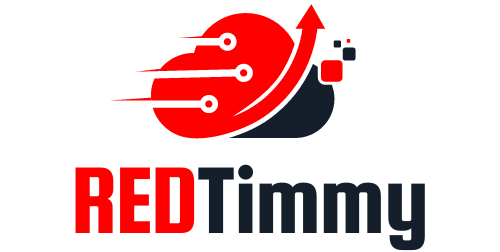The financial strategies of major IT companies are more significant than ever as businesses strive to harness technological advancements for growth, efficiency, and innovation.
IT spending decisions not only drive success but also shape the technological future of industries worldwide.
Let us talk about the major spending habits of IT companies in greater detail.
Categories of IT Investments

Major IT companies allocate resources across several critical categories, each playing a role in strengthening their competitive edge and driving innovation.
Innovation and Emerging Technologies
Investments in AI, automation, cloud computing, and digital transformation are at the forefront of IT budgets.
Companies leading in these areas allocate a substantial portion of their resources to such technologies.
These forward-thinking initiatives not only keep companies competitive but also position them to capitalize on new opportunities.
Key areas of focus:
- Artificial Intelligence (AI): Enhancing predictive analytics, customer interactions, and operational automation.
- Automation: Streamlining workflows to reduce manual intervention and increase efficiency.
- Cloud Computing: Offering scalable storage, computing power, and flexible application hosting.
- Digital Transformation: Modernizing legacy systems to integrate with advanced tools and platforms.
Operational Efficiency
View this post on Instagram
Improving and optimizing existing IT infrastructure remains a critical component of spending.
Companies analyze account-level spending and operational data to refine strategies, reduce unnecessary costs, and maximize output.
By investing in tools and systems that streamline operations, like MyTek, businesses can achieve higher productivity while maintaining stable operations.
Key benefits:
- Cost Reduction: Identifying inefficiencies and reallocating resources.
- System Upgrades: Ensuring existing tools and platforms remain secure and effective.
- Workforce Productivity: Empowering employees with improved tools and processes.
Cloud Solutions
Cloud computing continues to occupy a growing share of IT budgets.
Currently, 22% of spending is dedicated to cloud-based services, and this figure is projected to double in the coming years.
Cloud solutions offer unparalleled scalability and cost efficiency, making them a preferred choice for businesses seeking flexibility.
Key considerations:
- Cloud Sprawl: Managing multiple cloud services across different teams and departments to avoid inefficiencies.
- Cost Management: Balancing operational expenses (opex) with capital investments (capex) for financial stability.
- Security and Compliance: Ensuring data stored on cloud platforms adheres to regulatory standards.
Strategic Approaches to IT Spending

Major IT companies employ strategic methodologies to ensure their spending aligns with broader organizational goals while maximizing efficiency and value generation.
These strategies emphasize informed decision-making, precision in resource allocation, and measurable outcomes to sustain competitive advantages.
Data-Driven Spending
Organizations increasingly rely on IT spend intelligence to refine their investment approaches.
The process involves gathering detailed data about current and projected expenditures to create actionable insights.
By adopting bottom-up forecasting models, companies prioritize initiatives that offer the highest returns or meet critical needs.
Key aspects of data-driven spending include:
- Forecasting and prioritization: Leveraging historical and real-time data to predict outcomes and allocate budgets accordingly.
- Efficiency optimization: Identifying redundant or low-impact spending areas and redirecting resources to impactful initiatives.
- Strategic alignment: Ensuring that all IT investments support long-term goals and objectives.
Metrics and Accountability
To measure the effectiveness of their spending, IT departments adopt metrics and tools that promote transparency and accountability.
Dashboards and performance indicators play a crucial role in this process, offering real-time insights into how investments perform across various metrics.
Benefits of using metrics and accountability systems include:
- ROI evaluation: Gauging the financial and operational impact of IT investments to determine success.
- Enhanced transparency: Providing stakeholders with clear insights into how resources are utilized.
- Informed decision-making: Allowing organizations to identify successful strategies and areas needing adjustment.
Sector-Specific Trends

IT spending varies widely across industries due to their distinct operational needs and priorities.
Companies in sectors like banking, healthcare, and energy allocate resources differently, influenced by the challenges and opportunities inherent to their fields.
Banking and Securities
The banking and securities sector consistently reports the highest IT spending as a percentage of revenue.
In a highly regulated and competitive environment, these investments are essential for maintaining relevance and growth.
Key areas of investment include:
- Improved Security Systems: Advanced cybersecurity measures to combat rising threats.
- Customer Engagement Platforms: Tools for real-time interactions, personalization, and seamless digital banking experiences.
- Analytics and Big Data: Technologies to assess customer behavior, predict trends, and inform strategic decisions.
Banks also invest heavily in AI-driven tools to detect fraud, reduce risks, and automate routine processes, driving both efficiency and customer satisfaction.
Healthcare and Energy
In healthcare and energy, IT spending is primarily driven by digital transformation initiatives.
These industries are leveraging technology to improve service delivery, enhance operational efficiency, and meet growing consumer and regulatory demands.
Investments in this space include:
- Data Analytics: Tools for managing and analyzing large datasets, supporting better patient outcomes and efficient energy distribution.
- IoT Integration: Devices and systems that enable real-time monitoring, predictive maintenance, and smarter resource allocation.
- Telehealth and Remote Services: Solutions to increase access to care and reduce operational strain.
The healthcare industry has witnessed a surge in telehealth adoption, while energy companies are increasingly focused on using IoT and AI to optimize energy grids and support renewable energy initiatives.
Global Market Insights

IT spending trends exhibit substantial variation across different regions due to economic conditions, technological advancements, and market readiness.
Companies that aim to expand their footprint strategically allocate resources based on specific regional factors.
Emerging markets, in particular, hold significant potential due to rapid digital adoption and growing business needs.
Regional Differences
Developed regions such as North America and Europe focus on enhancing existing technologies and optimizing operational efficiency.
Emerging markets in Asia, Africa, and Latin America see higher investments in foundational infrastructure and digital transformation to support growing industries.
Data-Driven Strategies
Companies use detailed spending intelligence and account-level projections to evaluate potential in new markets.
Projections not only help identify high-growth areas but also highlight industries or sectors within those regions that could deliver better returns on investment.
Examples of strategic investments:
- Expanding cloud infrastructure in Southeast Asia, where digital business models are rapidly evolving.
- Enhancing cybersecurity in markets with increasing digital transaction volumes, such as parts of Africa and Eastern Europe.
Challenges in IT Budgeting
IT budgeting involves balancing forward-looking initiatives with the need to sustain existing systems.
Companies face ongoing challenges in ensuring resources are effectively allocated and that new investments do not compromise operational stability.
Governance and Flexibility
Modern IT operations often rely on Agile development methodologies, which demand flexible and iterative resource allocation.
However, traditional budgeting models typically follow fixed timelines, leading to potential conflicts.
Key Issues:
- Fixed budgets restrict the adaptability required for Agile practices.
- Lack of oversight during cloud adoption can lead to mismanaged resources and inflated costs, often referred to as cloud sprawl.
- Cross-departmental inefficiencies arise when governance structures do not align with the fast-paced nature of technology implementation.
To address these challenges, organizations are adopting hybrid budgeting models that integrate flexibility with accountability, enabling them to respond more effectively to shifting priorities.
Risk Management
2024’s motto: Spend Smarter, Not Harder in cybersecurity!
According to Gartner, organizations are seeing a 14.3% jump in global security & risk management spending. Learn how make the most cost-effective cybersecurity investments in our blog: https://t.co/R0zganuwF2 pic.twitter.com/9fX0oUvFhs
— ThreatDown (@Threat_Down) January 19, 2024
Effective risk management is critical to prevent resource wastage and missed opportunities in IT spending. Granular data insights play a crucial role in helping businesses identify gaps and refine strategies.
Key Considerations:
- Balancing innovation-focused spending with the maintenance of operational stability.
- Implementing detailed spend-tracking mechanisms to ensure transparency and accountability.
- Addressing unforeseen risks in areas like cybersecurity, cloud transitions, and integration of emerging technologies.
Organizations that prioritize data accuracy and risk analysis can better mitigate financial uncertainties and ensure that their investments yield long-term benefits.
Balancing bold innovation with a stable operational foundation remains a critical goal for IT leaders worldwide.
Summary
The spending habits of major IT companies reflect a strategic approach that prioritizes innovation, efficiency, and alignment with business goals.
Their ability to invest wisely will determine their success and impact on the broader market.
The future of IT spending lies in agility, data-driven decisions, and a focus on sustainable growth.

